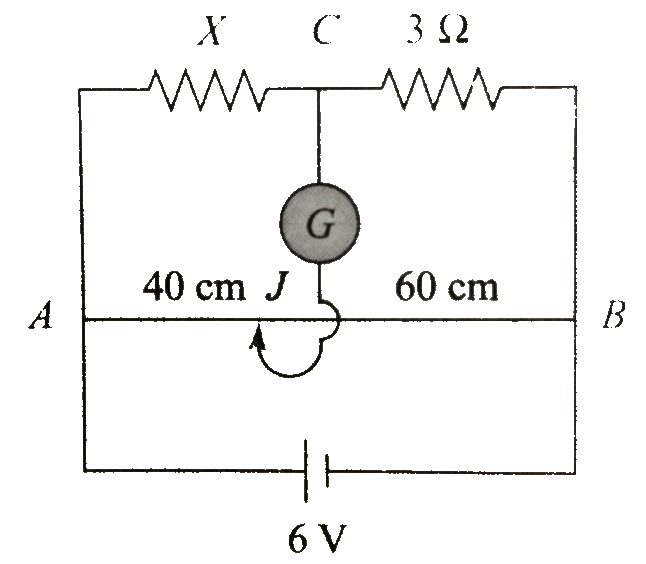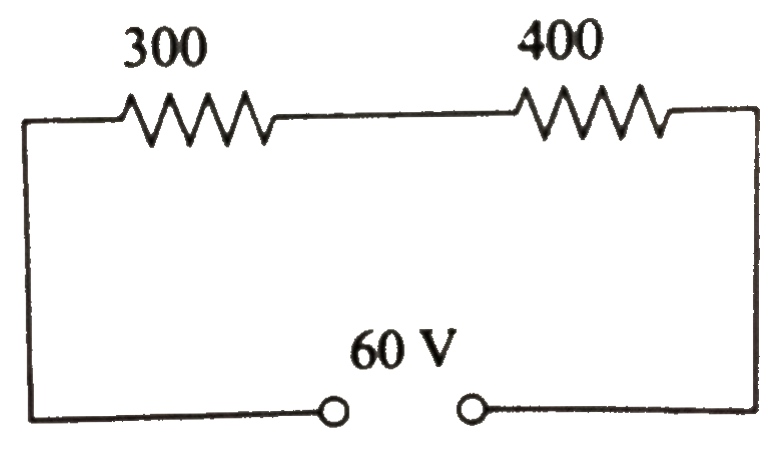Complete Solutions to Exercise 6.1 of chapter ELECTRICAL MEASURING INSTRUMENTS of Class 12 book with complete answers and questions
| Class 12 | PHYSICS |
| Chapter | ELECTRICAL MEASURING INSTRUMENTS |
| CENGAGE PHYSICS | Exercise 6.1 |
| Number Of Questions | 15 |
| Academic Year | 2023-24 |
Why is ammeter connected in series and voltmeter in parallel in the circuit?
View SolutionBy mistake, a voltmeter is connected in series and an ammeter is connected in parallel, with a resistance in an electrical circuit. What will happen to the instruments?
View SolutionA `100 V` voltmeter having an internal resistance of `20 k Omega` is connected in series with a large resistance `R` across a `110 V` line. What is the magnitude of resistance `R` if the voltmeter reads `5 V`?
View SolutionWhat will be the effect on the accuracy of the result if we replace a single-wire potentiometer by a potentiometer having `12` wires, the length of each wire being `1 m` ?
View SolutionIn the circuit shows in Fig. `6.20`, a meter bridge is in its balance state. The meter bridge wire has a resistance of `1 Omega cm^(-1)`. Calculate the value of the unknow resistance `X` and the battery of negligible internal resistance.

View SolutionThe variation of potential difference `V` with length `l` in case of two potentiometers `X` and `Y` is as shows in Fig. `6.21`. Which of these two will you perfer for comparing the emfs of the two cells and why ?

View SolutionTwo unknown resistances `X` and `Y` are placed on the left and right gaps of a meter bridge. The null point in the galvanometer is obtained at a distance of `80 cm` from left. A resistance of `100 Omega` is now connected in parallel across `X`. The null point is then found by shifting the sliding contact toward left by `20 cm`. Calculate `X` and `Y`.
View SolutionA galvenometer with a coil of resistance `12.0 Omega` shows full-scale deflection for a current of `2.5 mA`. How will you convert the meter into
(a) an ammoter of range `0` to `7.5 A`?
(b) a voltmeter of range `0` to `1.0 V`?
View SolutionWhat shunt resistance is required to make the `1.00 mA`, `20 Omega` Galvanometer into an ammeter with a range of 0 to `50.0A`?
View SolutionHow can we make a galvanometer with `G=20 Omega` and `i_g=1.0 mA` into a voltmeter with a maximum range of `10 V`?
View SolutionIn an experiment with a potentiometer, the null point is
obtained at a distance of `60 cm` along the wire from the
common terminal with a leclanche cell. When a shunt
resistance of `1 Omega` is connected across the cell, the null
point shifts to a distance of `30 cm` from the common
terminal. what is the internal resistance of the cell?
View SolutionIn the experiment of calibration of voltmeter, a standard
cell of emf `11 V` is balanced against `440 cm` of
potentiometer wire. The potentail difference across the
ends of a resistance is found to balance aginst `220 cm` of the wire. The corresponding reading of the voltmeter is `0.5 V`. Find theerror in the reading of voltmeter.
View SolutionIt is required to measure the resistance of a circuit operating at `120 V`. There is only one galvanometer of current sensitivity `10^(-6)` A per division. How should the galvanometer be connected in the circuit to operate an ohmmeter? Why minimum resistance can be measured with such a galvanometer if its full-scale has `40` divisions?
View SolutionIn the circuit shows in Fig. `6.22`, a voltmeter reads `30 V` when it is connected across a `400 omega` resistance. Calculate what the same voltmeter would read when it is connected across the `300 Omega` resistance.

View SolutionDraw the circuit for experimental verfication of Ohm's law using a source of variable `DC` voltage, a main resistance of `100 (Omega)`, two galvanometers and two resistances of values `10^(6) Omega` and `10^-3` respectively. Clearly show the positions of the voltmeter and the ammeter.
View Solution
Exercise 6.1 questions and complete solutions for chapter ELECTRICAL MEASURING INSTRUMENTS of CENGAGE PHYSICS (HINGLISH) of Class 12